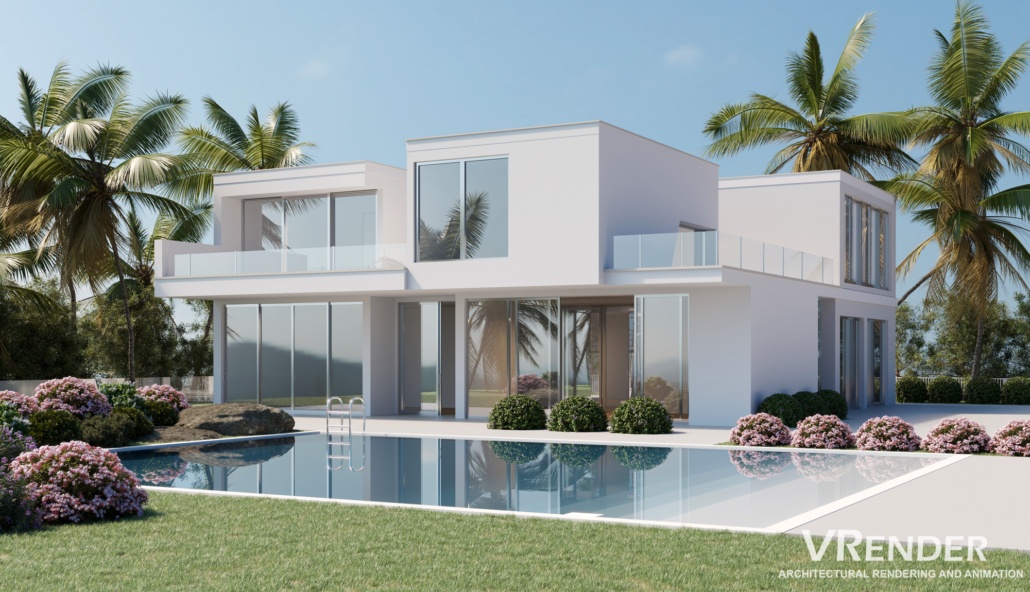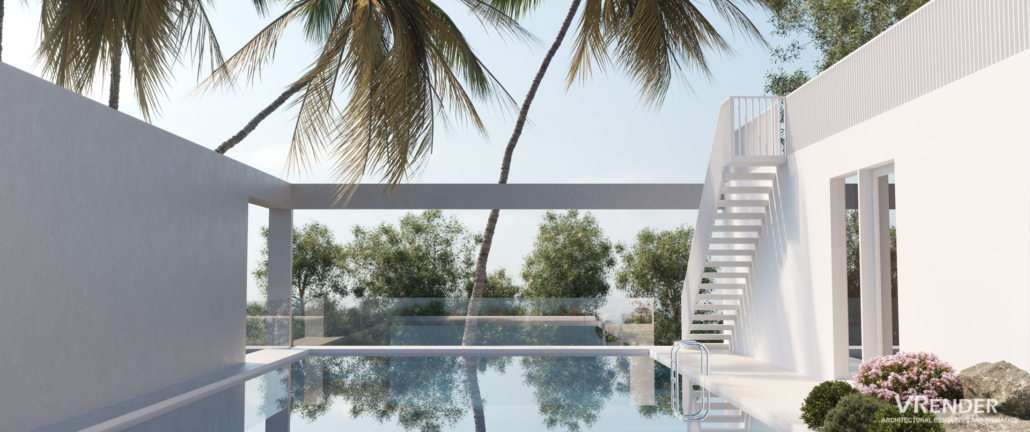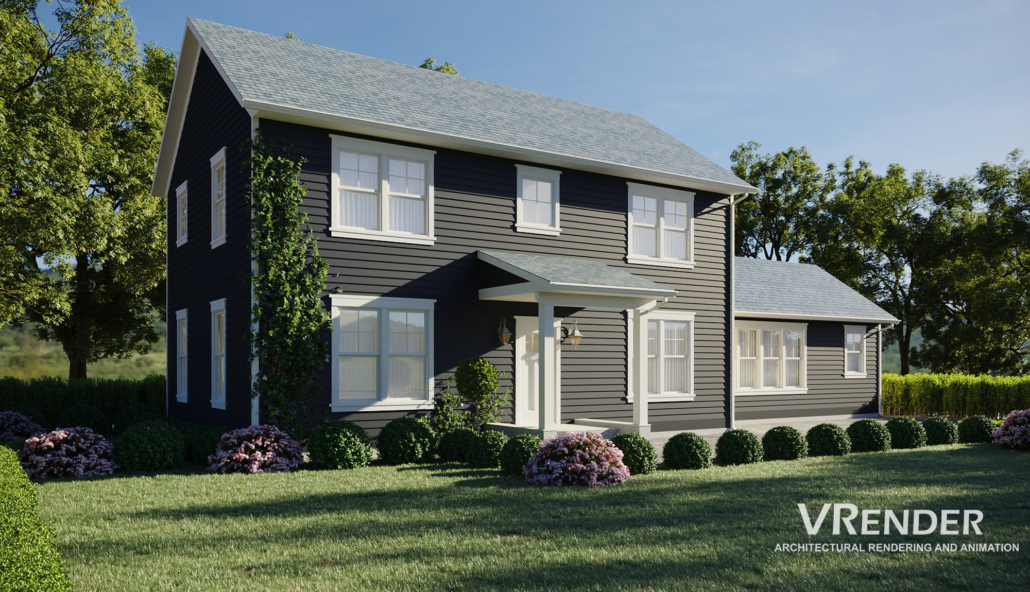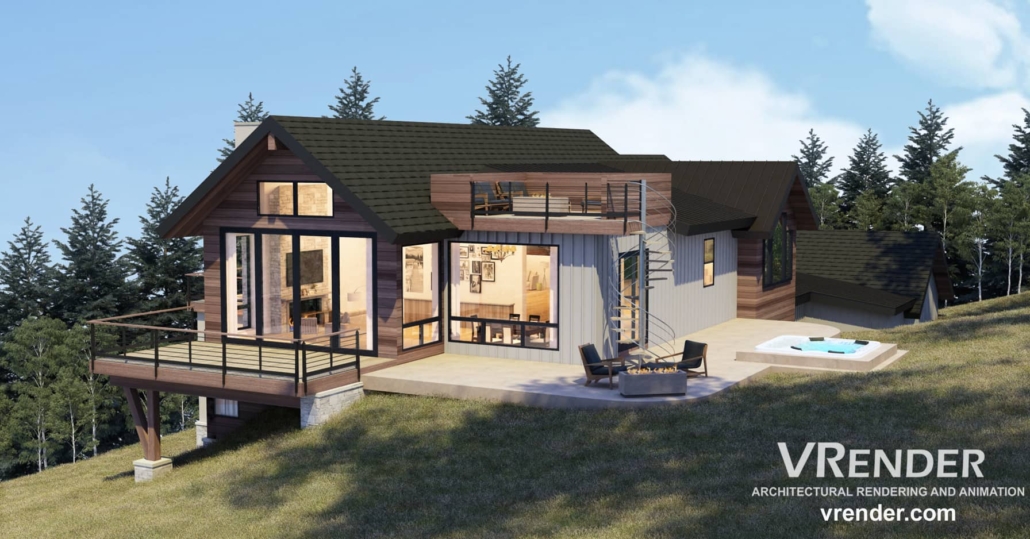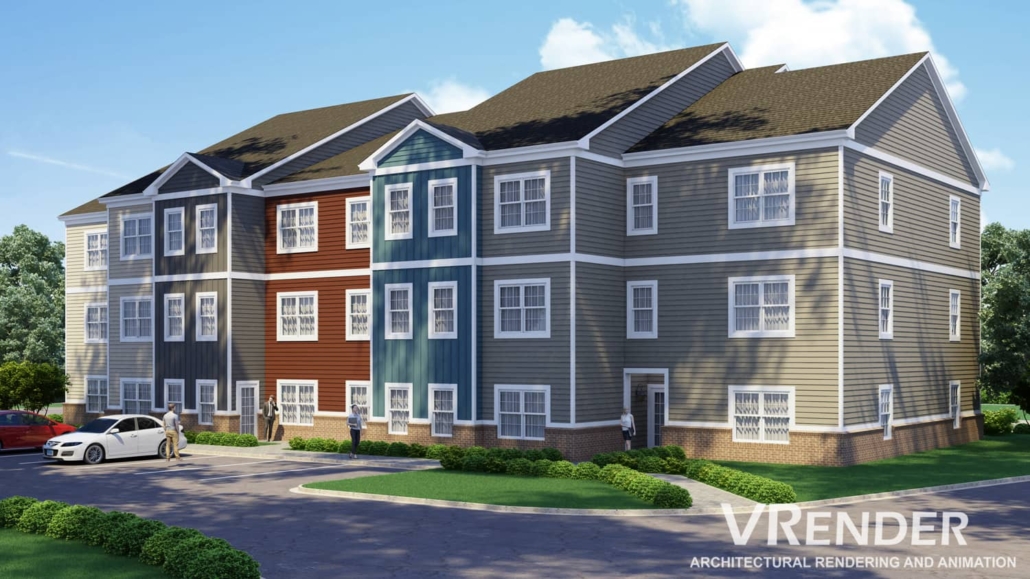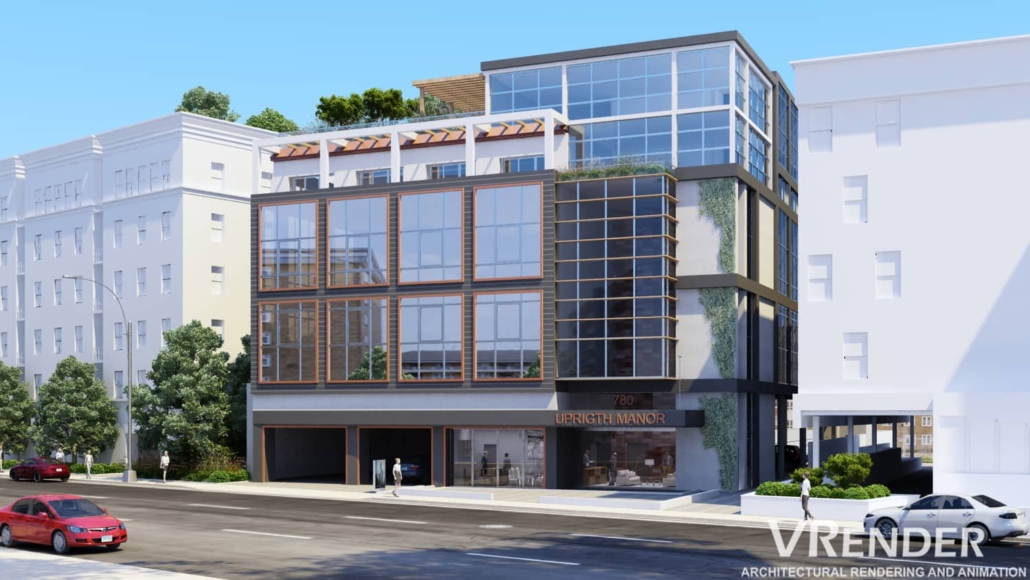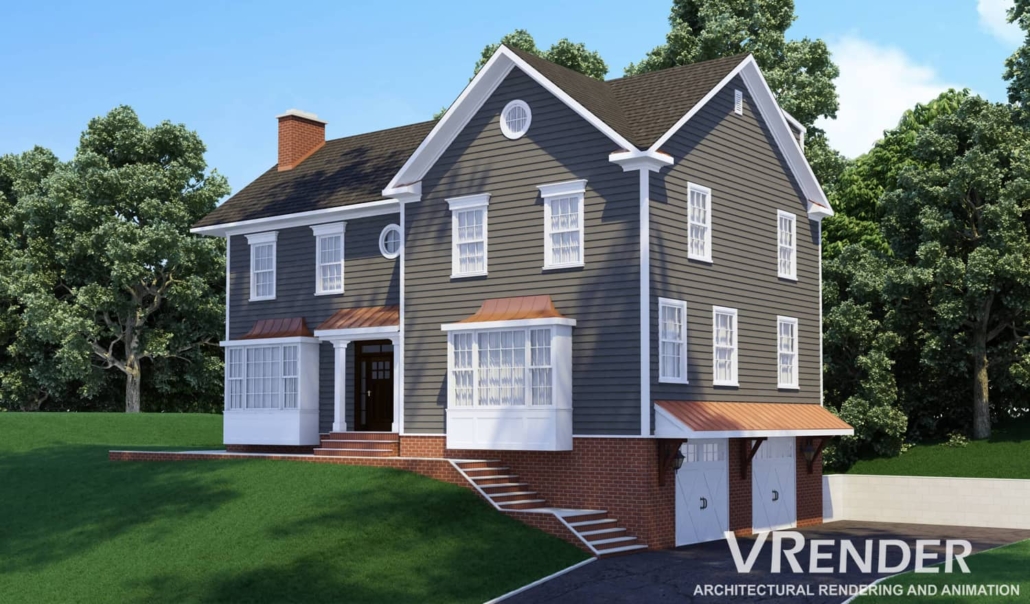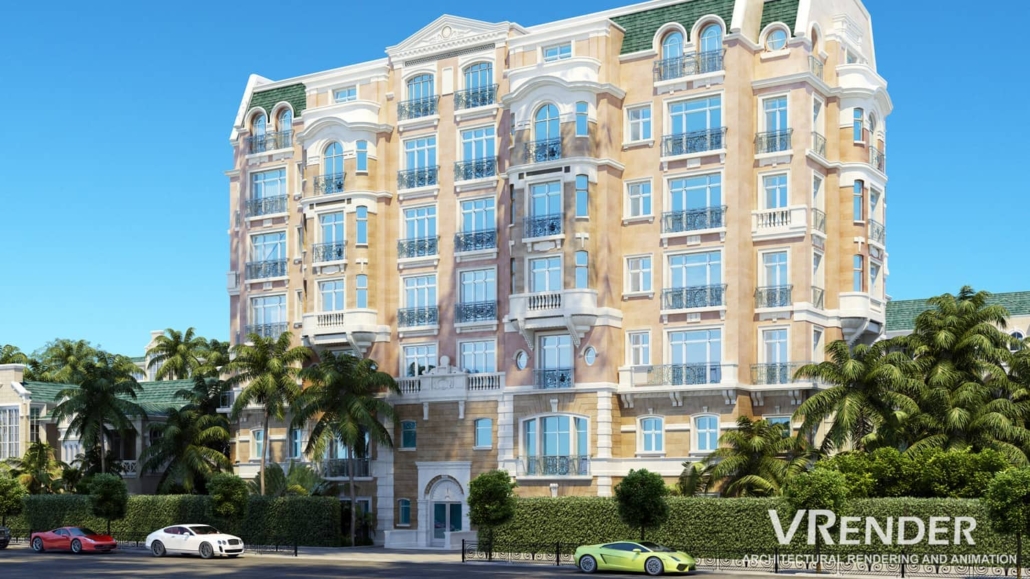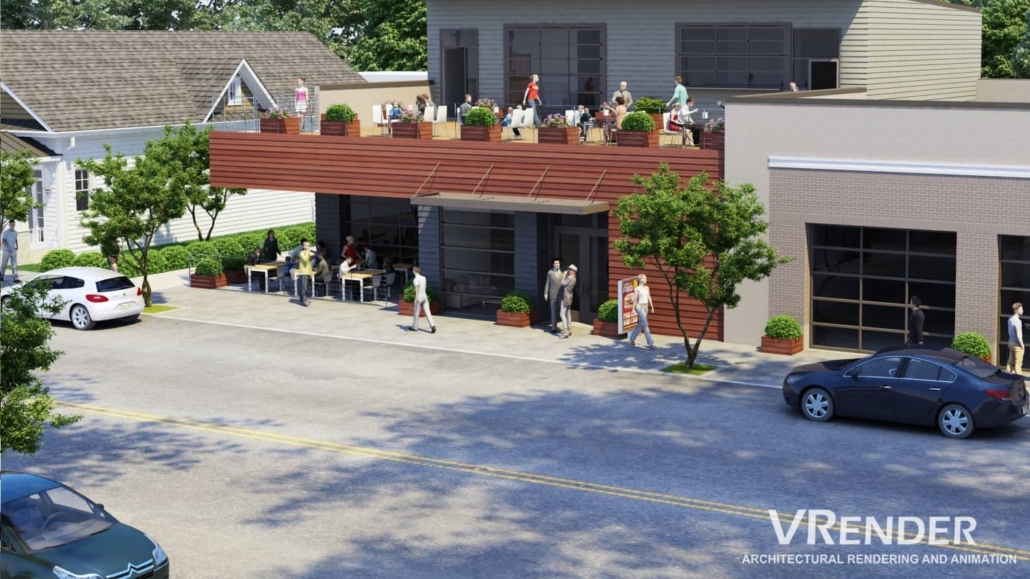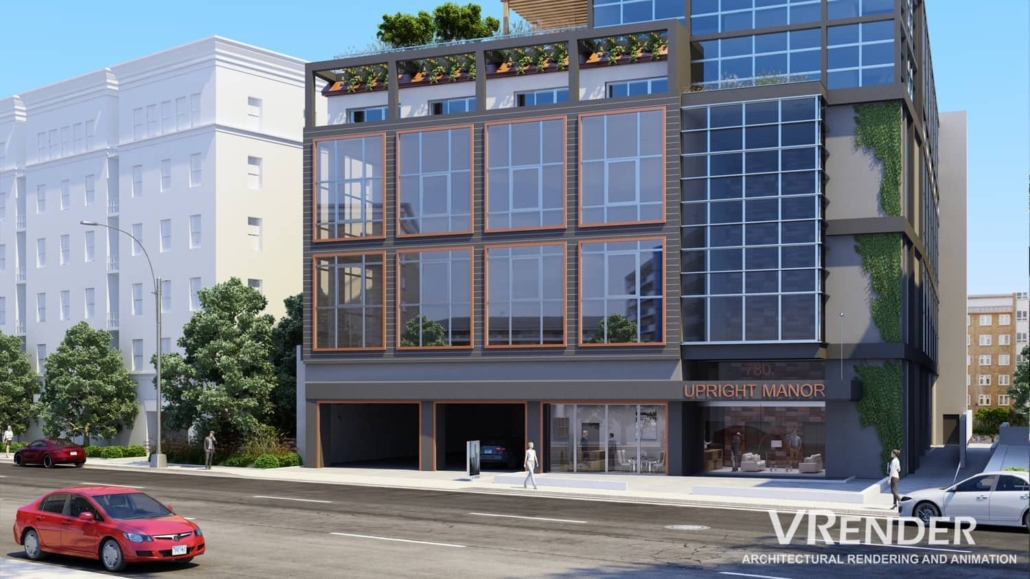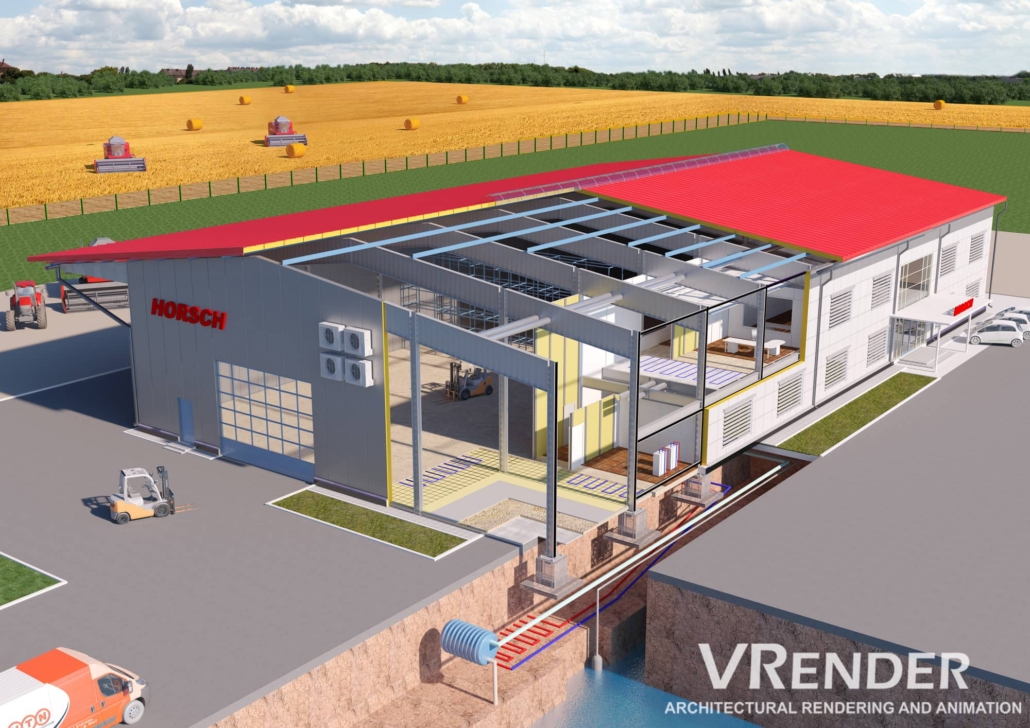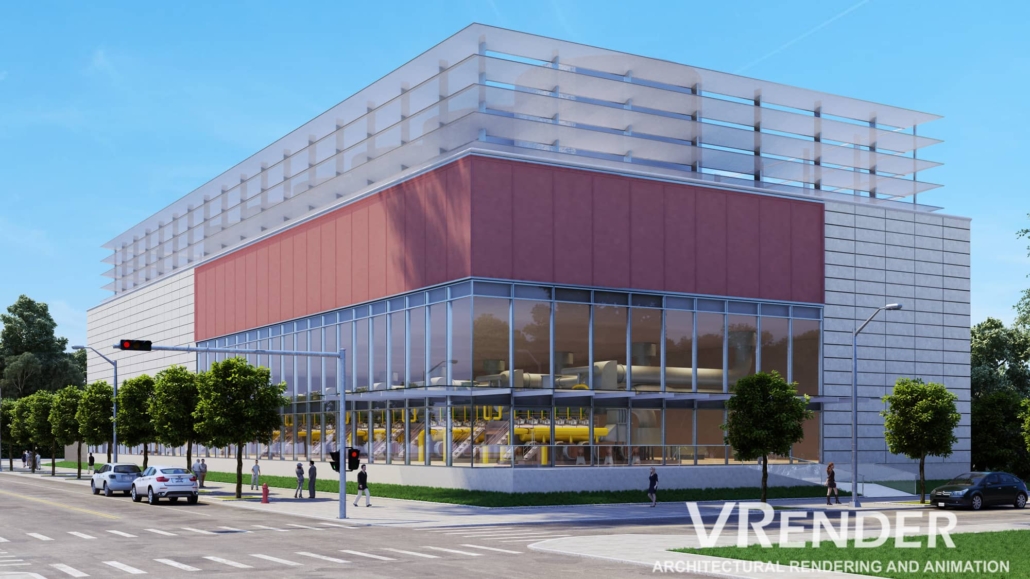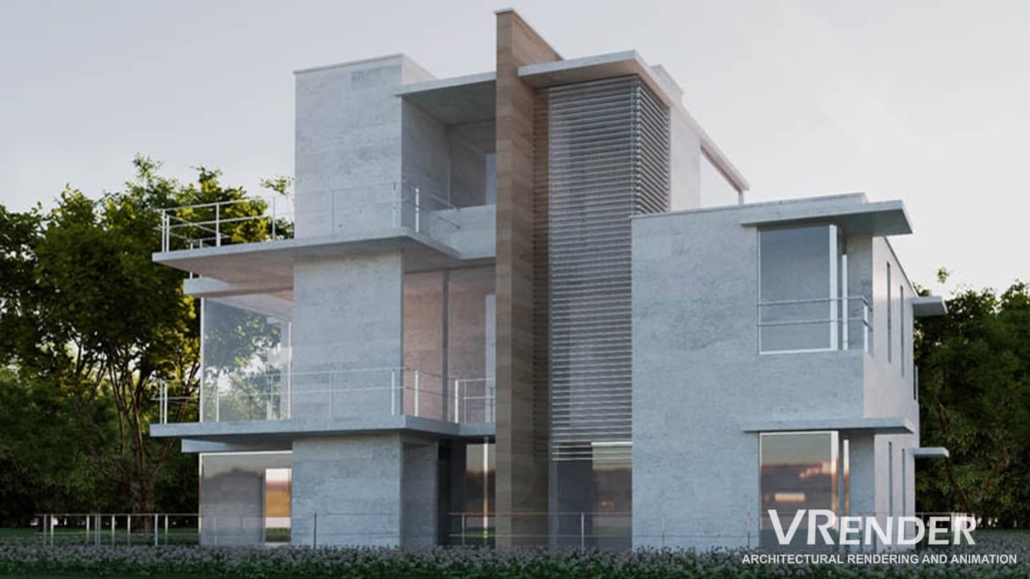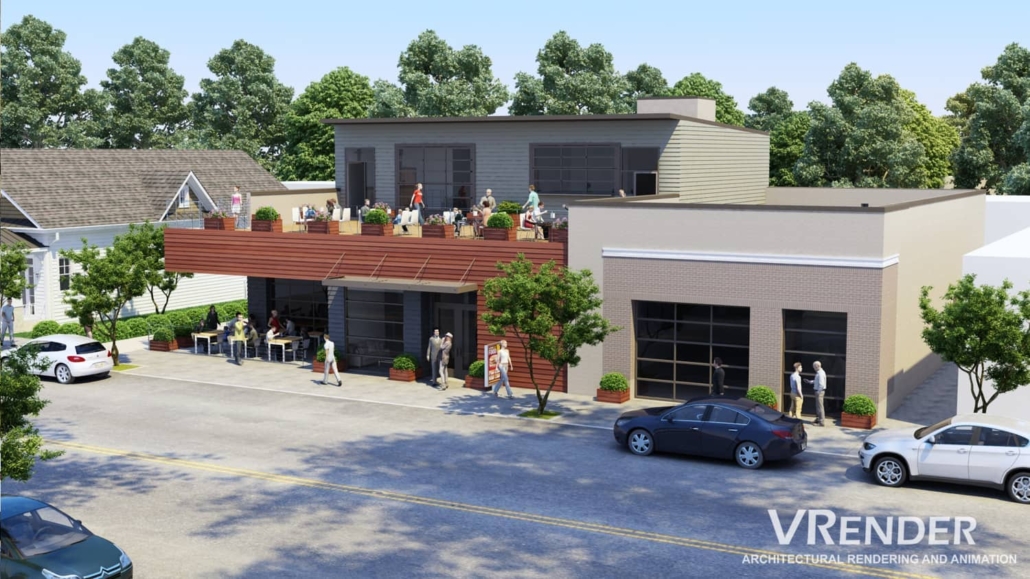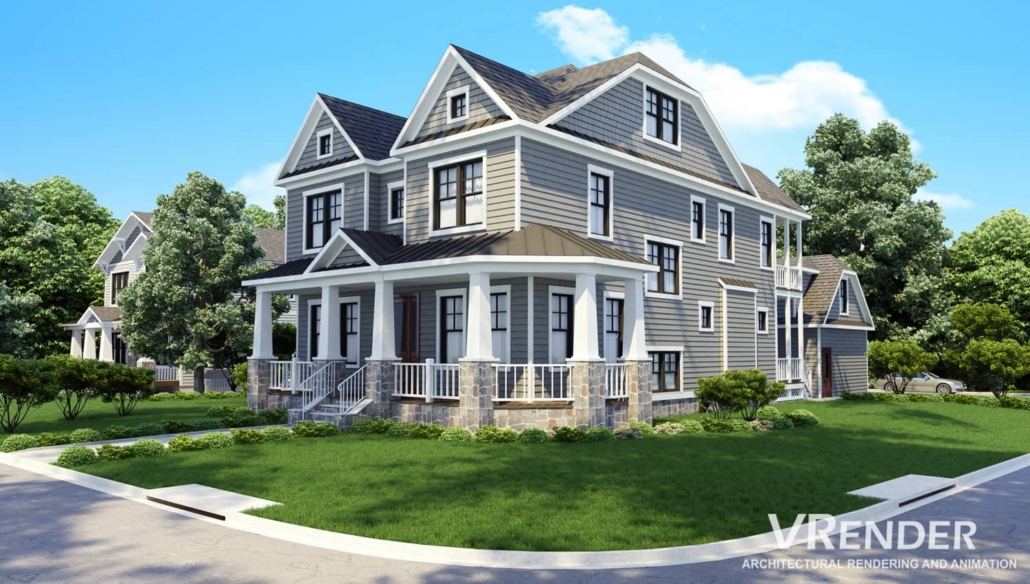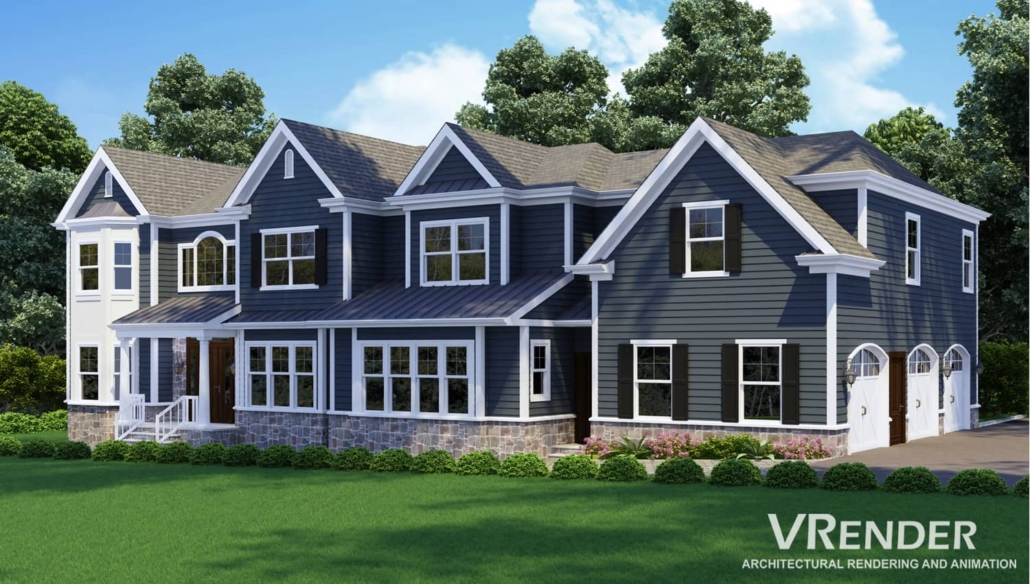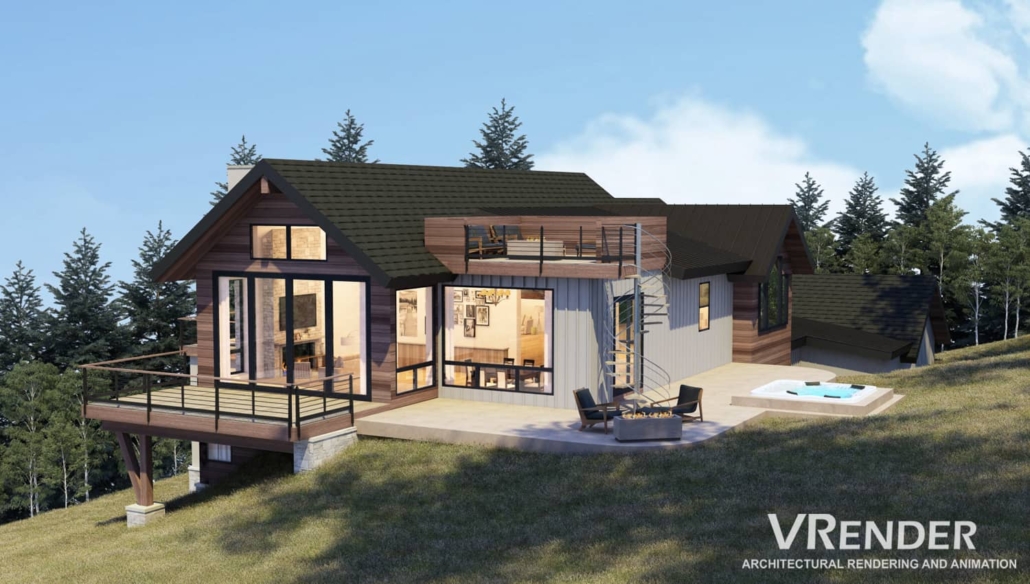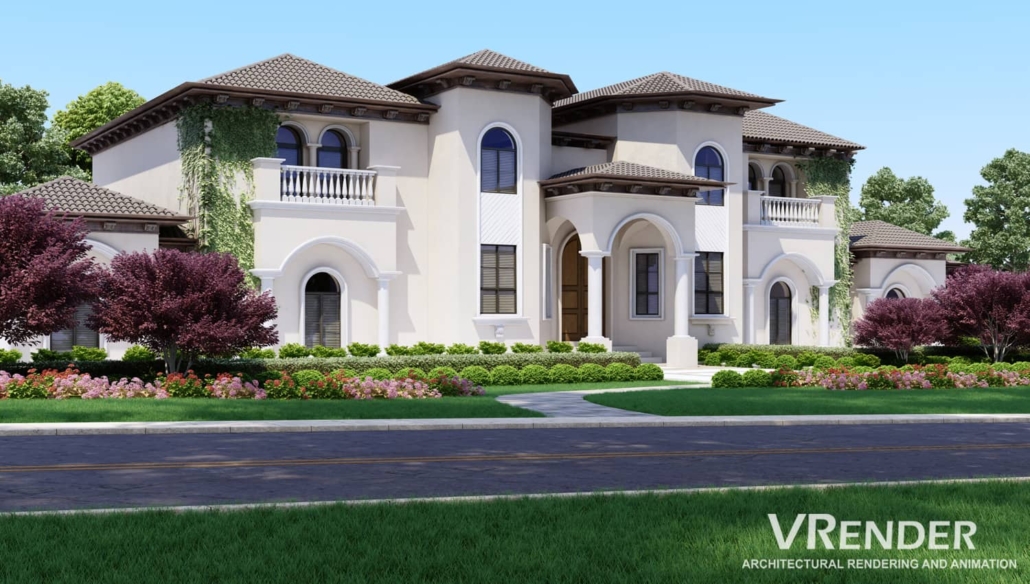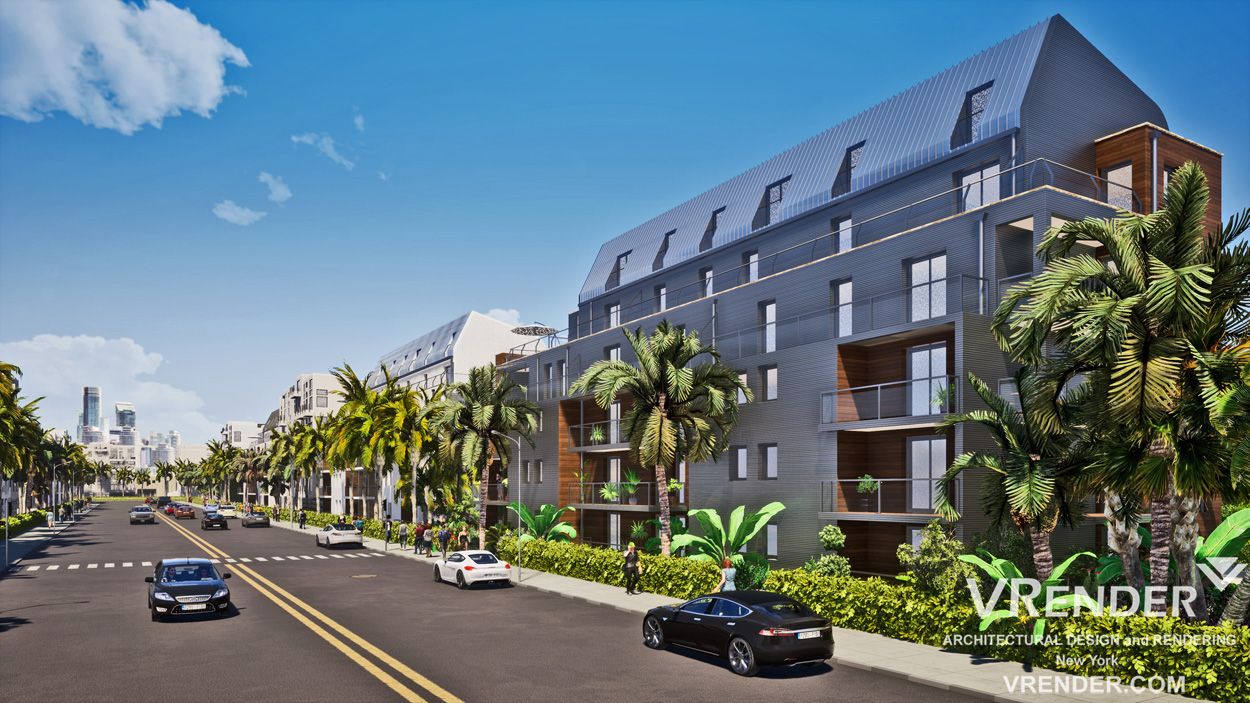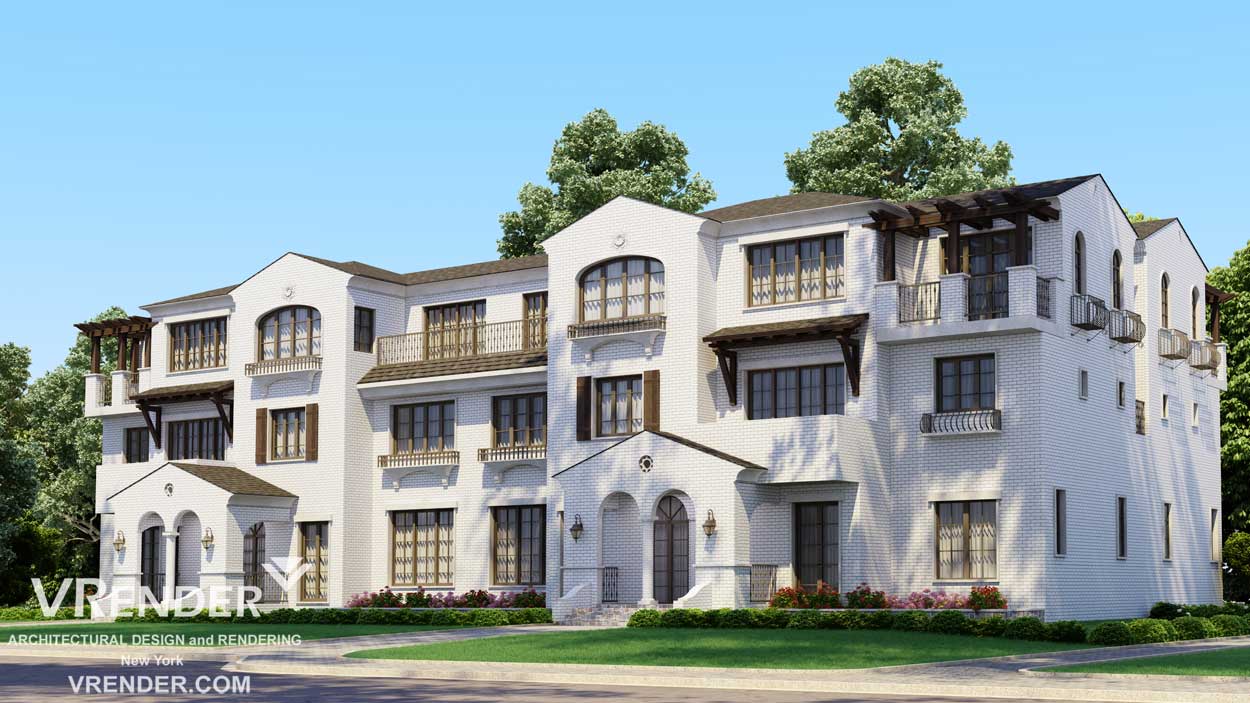3D Animation
This period of incredible technical progress offers every profession something. Information Technology has provided a wealth of valuable tools for real estate, architectural, and interior design in particular. Now you may sit down and buy a property miles away in the comfort of your own home. You don’t have to go to the site; simply take a 3D stroll of the property or home. With a 3D animation in its entirety, architects and interior designers can showcase their creations.
What is a 3D Walk-through?
A 3D walk-through is a process of virtual touring any structure from anywhere in the world via internet connectivity.
You can virtually visit your design ideas before implementing them if you consider a property purchase, a design for your home, office, or anything. Trust us if we say it saves a lot of money and time.
For example, if you want to buy a home during the pandemic, the property rates are much lower, but you don’t want to leave home security and convenience to go into an open house with others swarming around. The best alternative is a 3D walk-through because it saves you both energy and time with the additional advantage of not having to mix up with a crowd.
The realtors upload a virtual tour of the property, allowing you to have a lived-in experience of the property: checking the house from room to room and investigating every detail that matters to you. You could revisit the spaces as many times as you are comfortable with until you decide to make a purchase or not.
Now, you’re bound to question what type of software you can use to do a 3D walk-through?
Well, several software applications offer the services of a 3D walk-through to enhance your architectural creativity. Architectural animation is popular with BIM applications like ArchiCAD and Revit. In addition, Sketchup and 3Ds Max have offered 3D interior rendering tools, which are becoming popular. The animation process may be completed by using Lumion or Twinmotion for the final render.
Advantages of the 3D walkthrough:
The benefits of using 3D walk-through are numerous, especially as it concerns real estate, architecture, and design. Let’s delve into those advantages:
1. It saves money and time
The development of architectural and interior designs is susceptible to the inclination of individuals. The establishment of a 3D walk saves both the interior designer and the owner or town manager time and money. Designers may generate 3D architectural visualization and interior access for customers using this all-powerful application.
You may then pick any areas you wish to modify to consume money and supplies at a minimum. The project is completed considerably faster because 3D architecture rendering analyzes and verifies the designs to eliminate the causes for rework.
2. It allows for ease of communication between designer and client:
The 3D design tools are perfect for customers and designers to connect and relate on the same page. Before you implement anything, both parties may pitch their thoughts and make relevant revisions. The 3D walk-through includes features for zooming and criticizing every detail and aspect of the ground plan to allow customers to make certain modifications as they deem necessary.
3. Eliminates guesswork for the clients.
Suppose an architect or designer tries to present his ideas on a 2D platform. In that case, the customers may not fully understand the design concept, and they have to engage their imagination to picture the design in real life. But a 3D tour shows the design concepts in a 3D format so that customers can view the actual products rather than guess what they are.
Steps for creating a 3D walk-through:
1. Path outline
In creating a 3D Walk-through, the first and maybe most crucial stage is to set the paths. These are the path points that you may click to move through the different architectural views during a walk-through. You need to start from a 2D graphic by defining the walk-through points with probable horizontal and vertical motions at a reasonable interval. You can begin with a particular spot and follow a well-defined path with walk-through points.
2. Set the camera configuration
This is another very significant component of 3D animation. To eliminate any bumping throughout the journey, the focal length and frame rate must be carefully established. In addition, the time parameter should be adjusted carefully for each frame. You see, it must be easy and realistic to stroll through. If the camera setups are not set appropriately, the results will not be of the high quality required for the architectural animation. This isn’t how you want to communicate with customers. Here, accuracy is crucial.
3. Maintain Vertical Movements Provisions
In a 3D architecture animation, vertical motions may be rather difficult. For one thing, if further levels are to be considered, it is a necessary implementation. The height to which the vertical movement function is applicable must be defined. When creating stairs, these aspects must be given specific consideration for an architectural design of excellent quality.
4. Integration and participation
For the real estate business, this is an essential step. You should explore integration and uploading your 3D walk-through animations if you are a developer working on real estate projects. This is useful to attract customers who do not want to travel, especially during a pandemic, until they are entirely sure of it. It contributes to the creation of genuine leads for your property ventures. Potential customers will examine the animation to see how much their interest is in the property.
Conclusion:
To conclude, 3D walkthrough animation is a beneficial design service that helps you create a fantastic 3D animation of your ideas.
VRender offers both the customer and the designer an exceptionally smooth experience. Customers may express their concerns about the design at an early stage to avoid future errors. With this strategy, everybody is delighted.
An assuring measure to add life to a design and showcase your properties to prospective clients is with 3D architectural animation services. This service is a cutting edge strategy to tell the story of your design from a photo-realistic point of view to your clients and appeal to their emotions which in turn translates to increased sales, explain in detail and with clarity the technical aspects of the project such that even non-specialists can easily comprehend and exposes avoidable and excessive design errors before construction begins thereby saving cost.
3D animations are not only a cost-efficient technique of creating content for marketing materials and websites. They also make your sales showcase appear a lot more professional with sleek 3D renderings and animation. In today’s competitive market, that level of professionalism is critical for closing big deals, and leveraging high-quality 3D animation might be the key to your success. VRender should be the top name on your list if you require a 3D animation company to produce 3D product animation.
Our team renders 3D architectural animation services modeled to perfection. We meticulously pay attention to every texture, color, design element placed against corresponding light and shadow to create a realistic yet functional representation of your design and give your client an immersive experience. 3D architectural animation services are helpful for various design stages: preliminary stage, planning/designing stage, and marketing stage. Our 3D services range spans from home design to hotels, offices, malls, relaxation centers, resorts, schools, etc. Our professional and dynamic team is ready for any 3D animation project, regardless of the size or scope.
We provide numerous forms of 3D animation services that meet your demands. Whether you want an overview of an entire building, a comprehensive perspective of an aspect of the design, an architectural animation, or anything else in between, we can present your project with 3D animations that place you in your industry as a leading voice. You will be ideally positioned to put your competition in the dust by utilizing the strength of architecture animation.
We also engage in various kinds of 3D architectural animations such as:
- Interior walkthrough,
- Exterior walkthrough,
- 3D floor plan walk-through,
- Architectural animation video and
- 3D floor plan.
These various kinds of animation serve different purposes. For example, the interior walk-through highlights the furniture arrangement and placement of fixtures in interior spaces. It pays more attention to the textures of the materials used in that space and how light interacts with those textures in terms of color hues, light intensity, light absorption, and shadows.
An exterior walk-through depicts the facade of a building concerning the landscape and other external factors like natural light, wind direction, topography, seasons, diurnal variations, and global latitude.It is crucial for each company today to find a strategy to separate itself from the multitude, especially since we’re dealing with a competitive marketplace. Fortunately for you, VRender has a whole creative team of professional graphic designers and animators that can produce an animation of an architectural view or interior animation following your requirements.
Our staff can describe your concept and improve it with realistic 3D animations, which enable the audience to imagine your property readily.Over the years, VRender has offered our 3D architectural animation services to create animation and other marketing materials to several architects.
Our 3D product animations and 3D architectural animations have allowed them to communicate with prospective buyers or customers in the most minute detail and perspective of their projects, all without the excessively high price tag of professional photography and videography.The quality of the 3D architectural animation we offer is so realistic that your customers will have a lived-in experience of the building project. The good thing about building design in 3D animation is that it’s considerably cheaper than actual modeling.
Client Requirement
- Approved floor plans or design
- Skip /dwg/pln/CAD/PDF/CGI files
- Site Design or layout if necessary
- Images and photographs for peripheral details.
- Section/Floor/Layout/landscape/interior/level/Design Drawings.
With the mentioned requirements, we will begin to create your 3D feedback. This guarantees that everything we produce conforms to your standards. Our Team will provide you a preliminary greyscale version of your animation to ensure you’re happy with your progress, to confirm that they satisfy your criteria before our finishing touches.Once the preliminary release has been approved, we will generate the final high-resolution version and give it to you to do with it as you please.
Whether it’s a marketing tool or a handy pitch advertisement, your architectural animation may work for you in various ways. Please post it on your company website, make a TV commercial, shoot a video to share online; the possibilities are endless. Your 3D animation belongs to you, and there are no licenses or permissions required for you to use it in any way you see fit.
Most architects are hopelessly in love with their professions. Taking out the stress involved and the too demanding nature, they would not mind spending their every waking hour brainstorming on design briefs, searching out solutions to design problems, and of course, experiencing the euphoria of their creative juices. While 3D visualization is part of the process and has its satisfying effect, it can only be nothing more than a detour for an architect. They will soon be eager to go back to the actual design process. So, balancing both design and 3D visualization and sufficiently delivering promptly on both ends might be a hassle for an architect. Here are some other reasons why outsourcing architectural visualizations are super helpful.
You will have more time to develop your creativity:
3D visualization has proven to be highly relevant in marketing. It entices more clients with its realistic visuals of a project and, in some cases, virtual tours leaving an architect with no choice but to provide a 3D visualization for every project. However, the visualization process is somewhat time-consuming, so it is preferable for that part of the design process to be outsourced, giving you more time to develop yourself as a creative mind while maintaining or growing your market. Beyond being time useful, it is also cost-effective, allowing you extra bucks to spare and develop yourself even more.
You can get more for less:
This point can be compared to the concept of division of labor, where everyone carries out a specific task unique to their area of specialty for quicker and more efficient results. Outsourcing your 3D visualization project to professionals in that regard is an advantage because you can rest assured that the output will be on a professional scale. At the same time, you focus on ensuring that your designs are professional. Although it may be challenging to find such a reliable professional in the field, you can find the right plug with adequate research.
There’s No Binding Agreement:
Outsourcing usually has no binding agreement because it typically falls under the category of freelancing. To explain further, this implies that outsourcing jobs are only given at their availability. Therefore, outsourcing doesn’t only mean that you have a wide variety of options to choose from. You could also change your 3D visualization artist if he doesn’t live up to your expectations.
Outsourcing delivers on time
Are you worried that you may not deliver on time because of the bulk of work you have to do? Outsourcing takes out the cause to worry because not only is the workload shared, and you don’t have to do everything, but you have multiple options if one fails or disappoints you. All that you need to do is send in work and wait for the delivery day.
It gives you a competitive advantage
Learning to render projects by yourself with DIY videos can only do so much but will do nothing to set you apart and give you an edge over your competitors. You may get basic knowledge and a fair understanding of using rendering soft-wares but will leave your work looking tacky and unprofessional. Outsourcing translates to professional consistency instead of a trial-by-error approach, giving you a competitive advantage.
Outsourcing Is a Ready-Made Deal
The procedure necessary to handle 3D visualization projects by yourself is tedious and far-fetched because it will take up time and resources. On the other hand, hiring a third party to handle the visualization aspect is similar to going to a mall and buying a nicely made dress rather than buying fabric, deciding on the style of clothing to make, and sewing the dress yourself. It is even very likely that the “ready-made” outfit will be more professional looking than one sewn by oneself.
You Get State-of-the-Art Treatment
Because you will be outsourcing your project to a professional, he will most likely be more equipped to handle your project with improved soft-wares and up-to-date rendering equipment. All things being equal, outsourcing your projects’ 3D visualization aspect is a better choice than handling them yourself. Remember the old saying, “Jack of all trade, master of none.” Trust the professionals to do their part and focus on yours.
These days, it isn’t easy to find a market that is not competitive, and being able to penetrate such a market can be a significant challenge, mostly if one is relying solely on word of mouth and other traditional methods. 3D animation has penetrated various industries, including architecture, construction, real estate, interior design, etc. Its immense benefits are visible. 3D animation is the trick you’re looking for to boost your project sales, so rather than tell your clients about your project, you can show them.
However, before we discuss the benefits of 3D animation, here are two kinds of 3D animation:
- Animated fly-through
- Animated walkthrough
An animated fly-through is a 3D video rendering of a project at its finished stage. It gives an overview of what the project will look like in real-time when constructed. These videos help provide clients and potential buyers explicit imagery of the project, leaving little to nothing to their imaginations and helping them make informed decisions and speed up signing the agreements and closing the deal.
The difference between an animated fly-through and an animated walkthrough is thus:
Although both showcase the finished product of the design, a fly-through focuses on the exterior of the building, giving a bird’s eye view and showing the building’s environment, landscaping, roofing materials, window frames, garage doors, recreational spaces, etc. This can be a selling point for the building as people might begin to envision the activities they can have with their families within the environment. This can generate an emotional response while a walkthrough focuses on the building’s interior, showing the floors, lighting fixtures, door hardware, cabinet fixtures, and furniture, allowing you to have a lived-in experience of the building.
These tools have the same primary objective, which is to promote the sales of the project. Read on, and I’d show you how you can upgrade your project sales and boost your brand visibility with 3D animation.
Get your audience to look again
It is a well-known fact that images capture the attention of people faster than text. Many advertisers have used this tactic to their advantage by using bold and captivating images to capture the hearts of their market. Rather than write lengthy details about the project or proposal, an image that captures your project’s content and allows easy assimilation should be used. To this effect, a 3D image is more likely to draw a response from the target audience faster than a flat 2D image. 3D images are more practical as they give you a realistic and an “easy to relate with” image compared to 2D images that are mostly theoretical and complex. In most cases, they can only be interpreted by the professionals in that field.
By providing a 3D video rendering, you not only capture your audience’s attention, but you sustain it while providing more information about your project without boring them off. The 3D video rendering will maintain audience attention because it will show how their project will be at the finished stage. It will enlighten them more and help them to understand the project more. It will most likely impress your audience or client.
Motivate conversation
Once their attention has been captured and sustained, it will motivate a conversation between you and your client to express their thoughts, ideas, concerns, and the like concerning the project. 2D presentations hardly spark any engagement because of the lack of interest in the project birthed from difficulty in understanding the project. 3D renders make your project easy to relate with, hence provoking your client or audience’s reaction or sometimes emotions. They become more interested in your project and your brand and are more likely to patronize you because of the trust they have in your brand.
Brand marketing
In any market or industry, your brand is your identity. It sets you apart from others and gives you a competitive advantage in the highly competitive market. 3D rendering helps to promote that brand and keep you in the minds of your audience. While your competitors may still be relying on 2D blueprints, taking it a notch higher will set you apart because you will be perceived to be abreast with modern technologies. This will increase your audience’s trust level for your brand. 2D blueprints are also easier to forget than 3D renders. They allow you to express your individuality and uniqueness with your choice of materials, colors, etc.
Redirecting website traffic
The state of your website has a direct effect on your client influx. It gives the first impression of your capabilities and gives reason to your potential client whether to work with you or not. Including 3D renders in your content list for your website will boost clients’ flow to your website, generating traffic. The 3D video will do some magic as they will even double your numbers. Using SEO’s (Search Engine Optimization) such as 3D video rendering will put you among the top search results. This will increase your brand awareness, exposure, and visibility. Putting your brand out there is not enough as it will only attract site visitors. The use of 3D renders and 3D video renders on your site will encourage those site visitors into clients.
Increase the value of your Return on Investment (ROI)
3D renders allow you to spot errors or mistakes head-on and decipher solutions to these errors before the project is built in reality, thereby enabling you to cut the cost of unnecessary repairs. This helps in saving costs and increases the ROI on the project.
Creating a distinction between you and your competitors could land you your next job or contract.
So, if you want to leave your clients with no other option than to patronize you, introducing 3D rendering to your work should be your next line of action.
One of the main objectives of architects all around the world is their mode of presentation. The aim is to present ideas and thoughts in the simplest form yet with as many details as possible. Striking this balance is especially important because they have to satisfy both the clients they work for and the civil engineers and other building professionals. Also, to enhance any building project’s success, an efficient representation of the architects’ concept is a top profile requirement.
With the help of advancements in 3D visualization technology, architects are now partakers in this technology with immense benefits to the architectural and construction industry. On a general note, this technology has upgraded the practice of architecture to a whole new level. We will take a tour of the benefits and role 3D visualization has on architecture:
Amazing visuals means more crowd:
It is a common practice in the architecture and construction industry for designers to have portfolios, a collection of their previous projects, ideas, and concepts to give the client a picture of their capabilities and increase the amount of trust the client has in them. This will be an effort in futility if the clients don’t understand the designs or concepts on display, especially if they don’t know what they are looking for, have no understanding of architectural representations or if the idea is highly complex.
3D visual, because of their simplicity in presentation, connect the dots and tells the full story or concept quite quickly for everyone to understand and digest. It also allows for a thorough examination of the project, both the exterior and interior spaces, even with furniture arrangements, landscape design, etc., before the project’s commencement. This salivating technology attracts customers because it allows them to live in or feel their projects even before it commences.
Encourages collaboration
While going through the design process, input from other professionals should be encouraged because it proffers alternative and creative solutions to challenges the designer may encounter. This process can be hastened with a more efficient feedback system, which can be aided by 3d architectural visualization.
This particularly relates to large projects or projects with multiple decision-makers and stakeholders. To facilitate the process, communication is essential. Everyone must be on the same page as concerns the project irrespective of their different levels of understanding. While some may find it easy to read blueprints and understand them, others may feel entirely out of place hence disrupting the entire process. 3D visualization aids the communication process by speaking a language that everyone understands and even gives suggestions, express their concerns, and proffer solutions to design challenges.
With 3D visualization, the stakeholders, decision-makers, and construction managers can see the project in its entirety, including the proposed materials, textures, structural plan, and overall concept. They could also see how the building interacts with its environment and make informed decisions in a hassle-free manner, speeding up the feedback process and generally giving room for more innovative ideas and contributions within a shorter time frame.
Increases the hype on your project
Creating hype for your project is a modern-day expression for marketing, and the benefits of marketing are well known to us. It puts your brand out there in the market, making it visible; it creates an awareness of your project and secures future investments in your brand. Since the architecture industry is highly competitive, there are not so many things you can do to achieve all these. Excellent and unique visuals generated by 3D visualization technology can help in achieving the mentioned objectives. When a building project commences in a particular environment, it stirs up excitement in that area. The inquiry will be made about the project and the like.
With 3D visualization, this same kind of excitement or more can be triggered. Before the project’s commencement, rather than just a blueprint, 3D that is easier to relate with, probably alongside a project’s walkthrough, will be at their disposal. This is advantageous; depending on the project, it will be at their disposal to attract investors to pitch earlier. In the case of real estate properties, interested buyers can make up their minds and make a purchase faster, having seen the building in its finished state rather than waiting for the project to be completed, then taking a tour before deciding to buy or not.
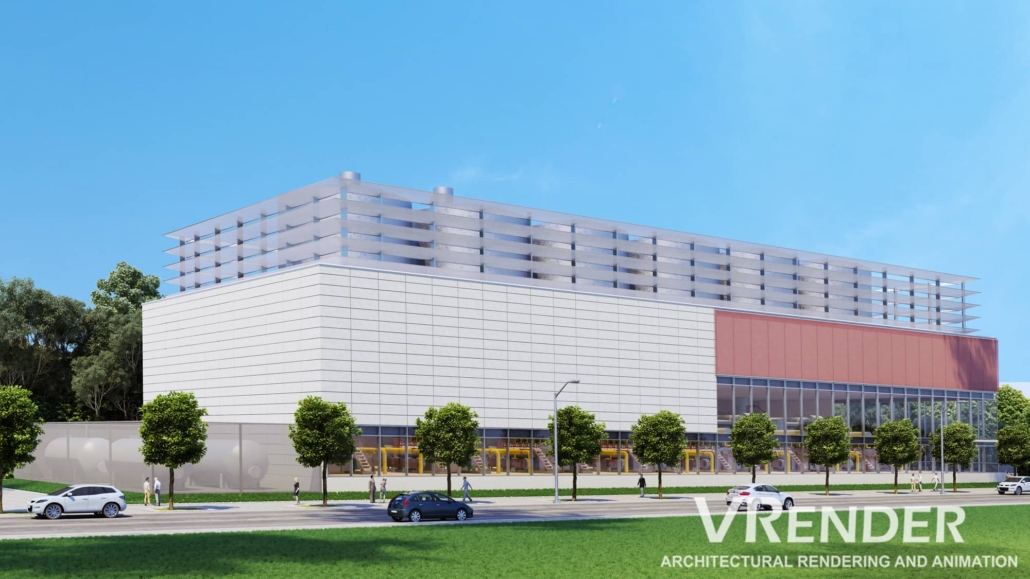
Simplifies acquiring contracts and investments
No matter how grand or detailed your project is as an architect, your method of presentation determines whether your project will be accepted or not. This knowledge pushes architects to any length to ensure that deal is closed at the end of the day. The options available before the introduction of 3D visualization were PowerPoint presentations, detailed maquettes, etc. These traditional methods are not as efficient as the 3D visualizations of today. For one, building those maquettes is a tedious process. When pitching a project, you must use the best available resources within your disposal to make the best out of it.
In some cases, the clients have busy schedules and may not be available for face to face meetings. Some others, even in their availability, want to be impressed within the shortest time frame. The solution to both seeming challenges is 3D visualization as it conquers the distance constraint and the time factor while attaining the objective, which is to bag the contract. Amazing visuals give a sense of professionalism to the clients or investors and show that you are up to date on recent technologies. It increases your chances of eventually getting the contract.
Fewer errors
It is less likely for errors to be found within a project that engages 3D visualization because, as it was stated before, visualization aids collaboration. With many people working on a project, errors are spotted easily and corrected promptly with creative solutions. Also, spotting errors in the blueprint phase of the design is complicated. Many things are left to the imagination with inadequate information on the different aspects of the building: structural frames, materials, etc. 3D visualization gives a lived experience allowing the professionals to walk through the design process’s developmental stage and spot any errors head-on. This helps to avoid collateral damages if the errors were spotted during or even after construction. It also allows the project to be finished within the stipulated time frame.
Easier revisions
Having many revisions on a project is inevitable because of the complexity of most modern designs and shareholders involved. Working strictly with blueprints entails a complicated process of incorporating edits as they involve, in most cases, starting over, ultimately taking more time and work. This delay could even cause you to lose some clients. With architectural visualization, making revisions is significantly more comfortable as it can be done at any time and any stage of the design process. The process involved usually includes changing the parameters in the rendering software to align with the modified revisions. Not only is this process more comfortable, but it also takes an incredibly shorter amount of time. The modifications could still be improved on until the desired result is attained. This easier process saves a lot of work time and makes the project ready within a short time window, translating to saving cost.
Conclusion:
Architectural visualization has replaced the traditional designing methods, and everyone embraces this change because it seems almost impossible to handle current projects without this technology. The benefits are numerous and cannot be overlooked mostly by an architect looking to survive and thrive in the architecture and construction industry.
3D rendering is visible all around us in today’s digital world. It has become a part of the essential industries in the world. It has indeed come a long way, and it is here to stay because it has gone through significant advancements and modifications and will continue to improve with the times
It has now become a norm to create hyper-realistic animations, visualizations, and images. Anything is possible, and it is even a bit tough to differentiate between the real world and the virtual space. It is present in almost every industry, especially architecture, construction, gaming, entertainment, marketing e.t.c
This technology allows artists or creatives to show the world a sneak peek into their minds so that everyone understands it. 3D rendering is a form of communication between the artists and the rest of the world, and to understand the process involved, let’s clear up some basic things concerning 3D rendering.
3D Rendering: The Basics
3D rendering represents objects in a 2-dimensional medium such as a computer wireframe model, manipulating the materials, shadows, texture, lighting, and color to create realistic photo images called renders. A practical result of 3D renders is in the fantastic animations we see on television. The process for 3D rendering will be explained in three simple steps.
The first step is to lay down the sketches with flat geometric shapes, which are then coupled to form polygons in modeling.
Next, the models are manipulated or tweaked using numerous software tools to create a raw version of the final design known as a natural wireframe. This process is called 3D model manipulation.
Finally, the basic wireframe is edited with filters, artificial light sources, shadow, texture, and color to project all the 3D render features.
Since we now have 3D rendering basics out of the way, let’s see the applications.
Animation and 3D Rendering: The Applications
In almost every primary industry, the applications of 3D animations and rendering are evident. This technology has a high appeal quotient, especially to the modern generation, and a driving factor for any industry’s success.
They are unique tools for special effects and processing/rendering whole environments with a high level of hyper-realism in entertainment.
In the world of architecture and construction, 3D rendering took a lot of stress off these professionals, so they no longer have to engage in the time-consuming and energy-draining process of draw blueprints by hand. It also allows them to perform more efficiently by letting their creative juices flow smoothly and give more details to their work. It doesn’t end there, as communication between client and professional is made more accessible with virtual tours, animated and illustrated views of the project to explain concepts to clients further.
3D rendering is also an essential tool in interior design as it brings to life a particular space and gives a lived-in experience.
With this understanding, we will see how a simple sketch can be turned into a realistic 3D rendering.
Step-by-Step Guide to Realistic 3D Rendering
We can safely say that 3D rendering is a form of virtual photography since it entails skill and expertise in lighting and staging scenes to capture realistic photo images.
The step by step process to create such photography is listed below:
1. Client:
Understanding the client is the first step in this process. The client must be pleased; else, the project is a failed one. So, you must fully understand the needs of the client before commencing the project. If necessary, ask every possible question and get as much information on the project as possible (reference images, sketches, plans, etc.), even those that are seemingly stupid, to ensure that you get this first step right.
Once you’ve gathered all the necessary data, the next step is to conceptualize the client’s ideas.
2. Project design and analysis
Many people may feel that this aspect is not necessary. Still, it speeds up the project’s process because it outlines every requirement, including texture and color specifications, and the significant points to focus on. After the careful analysis is done, it will be easier to move to the next stage, the design phase.
3. 3D modeling
Next, the design or 3D modeling process begins. As mentioned before, it starts with basic geometrical shapes, coupled to have polygons, and then individual elements that are then placed correctly gives a glimpse of the final work.
Textures, materials, and colors are then added, giving more detail to work, and depending on the choice of software, a detailed library is available to aid or simplify this process. This is a crucial part of the work as the degree of photorealism of the end product depends on how well the textures and colors are manipulated to create the desired effect.
4. Lighting, 3D rendering, and refining
This aspect requires a great deal of skill in understanding light and shadow and its principles because the goal is to bring the final project as close to reality as possible. It also requires deep consideration and creativity to achieve the desired ambiance. If appropriately manipulated, it will not only keep your client happy and satisfied; it will be your comparative advantage over other artists. The most important thing in 3D rendering or the end of it all is how close to reality the final product is attained.
Time is also an essential factor, but you must note that quality time must be invested to get a quality outcome.
Lastly, feedback from the client is the end game. This is where all the final corrections and last-minute alterations are made.
Conclusion
3D rendering is a technology that has come to stay and the more the advancement in technology, the more detailed and complex it will become. However, its contributions to various industries are welcome and highly appreciated with anticipation for further improvements.
3D Panorama is the ability to “look around” at 360° from a single point with the capture of the floor and ceiling. 3D Tour is a tour inside of the three-dimensional space, a walk through a future interior and sightseeing of a future facility.
Types of 3D Architectural Virtual Tours
There are 2 main types of virtual tours:
1) Based on panoramic photos, spherical or aero shooting. Such tours work on ready-made, existing, live objects and perform various marketing tasks to attract customers and visitors.
2) 3D tours and panoramas, which are a kind of virtual excursions based on only three-dimensional graphical images of future objects (non-existing). This is where the entire strength of modern capabilities and technologies of the future takes power. On this site, we offer you services of creating 3D tours and panoramas as a great addition to the existing portfolio or presentation of your project.
3D panoramas
Another option that is available to our customers is ordering the 3D panorama of the future object. This is very effectively during presentations or sales in person.
Of course, a simple 3D visualization is already a comprehensible image, very photorealistic and giving a possibility to understand a lot. However, if you offer your customer not only a “photo album” or a slideshow, but a whole virtual tour inside of his or her future home, car showroom or a museum, the effect will be unsurpassed!
Why do I need a 3D panorama or 3D tour?
- to effectively complement already existing presentation or portfolio
- to create a positive image of your proposal
- to emphasize your high professional level and modern approach you use
- to help present an object in conditions of limited time and/or a large number of agreeing person
- sometimes it can be a budget alternative to costlier animation
- it increases the loyalty and trust of potential customers
- it makes the visualization more understandable as it helps to see all the advantages of the object
- it increases the time spent by a visitor (a prospect, a client) on the site if you place it there
- the effect of presence on the object is created (as it is possible to consider even the smallest details).
Vrender Company 2018.

